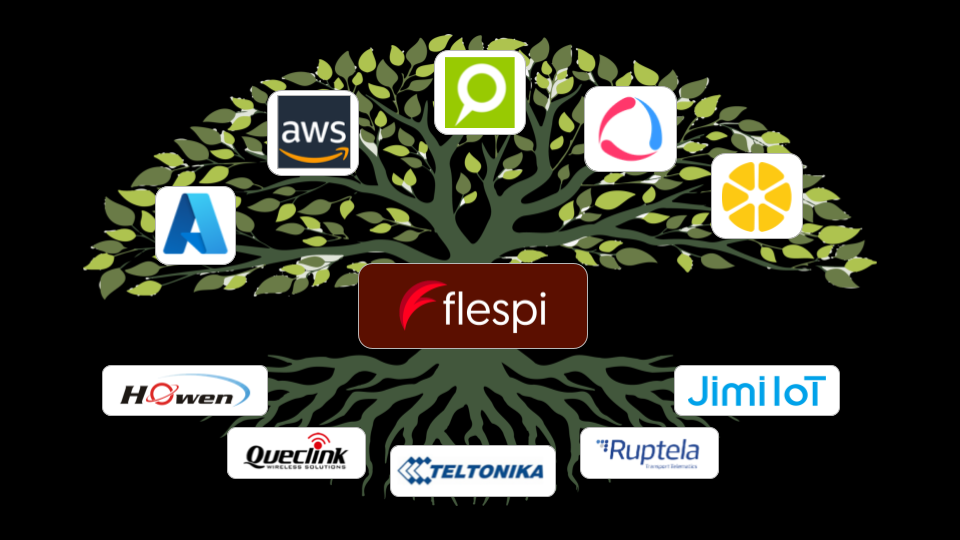List of topics we’ve previously covered at flespi conf 2023:
Summing up the 6+ hours of presentations our team delivered during the conference, let's take one step back to overview all the capabilities our platform can provide, even if you've been using it for quite some time.
First off, flespi is not just a direct highway connecting two points on the map; some might think of it only as a fast lane to retrieve data. It's a complex multilayer telematics hub to analyze, enrich, and transform the data once ingested and stored. It's developed to deal with thousands of devices connected at once while delivering parsed data in a beautifully structured form for further injection into your service or web application.
But now let's move aside new features or new functionality that we regularly deliver. Development is not only about our intention to go at the fastest pace possible but also about foretelling perspectives and building tomorrow's digital landscape together with our partners.
Data exchange between different systems has been appreciated by many telematics market leaders, speeding up their growth and being more than a theoretical option to multiply revenue. Major telematics fleet service providers like Samsara, Geotab, and Wialon have already realized the importance of integrations. But what if we add another axis on the horizontal?
Here, flespi can be represented vertically - as a branching tree. We've got 140+ protocols as the "roots" (channels), the data is coming up to a "trunk" for aggregation, transformation, and analysis, and later could be sent via streams to other platforms. The concept is that without touching a physical device, just by having it connected, you can easily operate, direct, and split the data to a variety of destinations.
The 20+ integrations we’ve completed so far fall into 5 categories:
- Cloud computing platforms
- Fleet telematics
- Specialized IoT/Telematics tools
- Electronic toll systems
- Generic integration mechanisms
Let's go step by step. Providing an impressive count of services, cloud giants like Amazon AWS, Microsoft Azure, Google Cloud Platform usually are missing the main driving factor – the price. But cost-predictability is the key to business efficiency at every step, and worrying about increasing bills might be frustrating, especially if you’re dealing with a vast fleet of devices consuming MBs of data.
Fleet telematics is the largest category with 8 integrations – among them are Wialon, GPS-Trace, Mapon, GPS Gate, GPS Wox, Traccar. You can easily set up a stream to use data already accumulated to forward it to these platforms, which might be another point of growth.
With specialized IoT/Telematics tools, you can set up some interesting data processing and impressive visualization. We support such known leaders as ThingBoard, Maxoptra, RedList.
Electronic Toll Systems are being developed by many countries already, as any GPS tracking device is more than capable of collecting all the data needed by the toll system. You can reach us if there's an opportunity and here are the use cases we've already successfully implemented.
For generic integration, HTTP streaming is still the most commonly utilized option, followed by RabbitMQ and MQTT, both of which we highly recommend. (Please notice that if you’re on an Enterprise or Ultimate plan, we can develop private integrations to have secured streams restricted to your account only.)
Other arguments, no? Then I'll wrap it up with a quote from the video you're about to watch: "In the fast-paced digital landscape, the ability of software to integrate determines its relevance and effectiveness.” Period.
That's all, folks! We hope the conference content was fairly insightful. Remember, we're just one step away in chat for assistance or if you'd like to discuss any specific case or issue. Stay connected!
